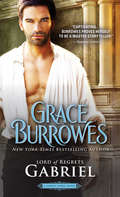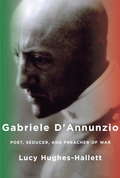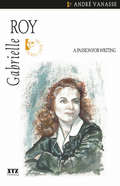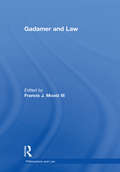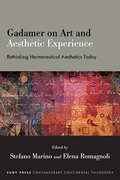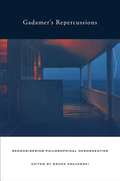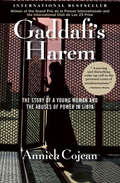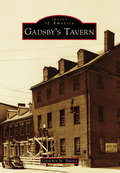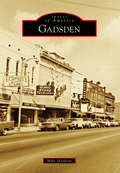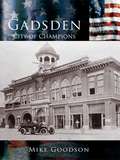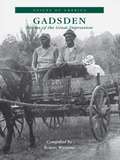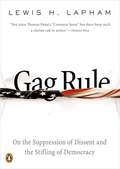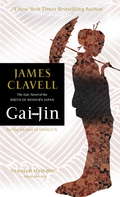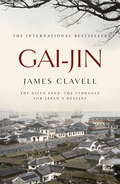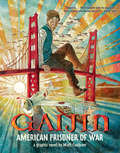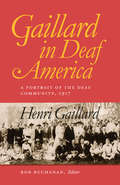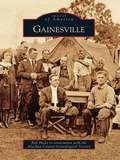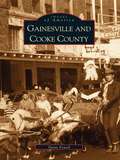- Table View
- List View
Gabriel: Lord of Regrets
by Grace BurrowesA man with a dangerous futureA lady with a dangerous pastAfter two years in hiding to protect his family, Gabriel Wendover, Marquess of Hesketh, leaves behind the woman he loves and returns home to untangle the plots against him. When the lady turns up on his doorstep to paint portraits of Gabriel's brother and sister-in-law, he's not sure whether it's by accident or design. And now she could be in harm's way too. Polonaise Hunt is an accomplished artist who is determined to paint the prestigious Wendover family portraits, but coming upon Gabriel in his new situation changes everything. Despite their mutual passion, trusting Gabriel could cost Polly everything she holds dear. The Lonely Lords:Gareth (Book 1)Andrew (Book 2)Douglas (Book 3)David (Book 4)Nicholas (Book 5)Ethan (Book 6)Beckman (Book 7)Gabriel (Book 8) What People Are Saying about Gabriel:"Captivating... Burrowes proves herself to be a master storyteller!"; —Romance Junkies"Exquisite... A riveting historical tale and an amazing love story."; —Long and Short Reviews"A true super star of the historical romance genre... Exquisite."; —CK2's Kwips and Kritiques
Gabriela and His Grace (The Luna Sisters)
by Liana De la RosaA scandalous arrangement between a hellion heiress and destitute duke reveals truths that neither can outrun….As the youngest and most rebellious daughter of the overly protective Luna family, Gabriela Luna Valdés claws after her freedom in any way she can. This time, her hunger for adventure has led her aboard a windswept ship bearing for her homeland, away from a mob of fumbling British suitors. But Gabby can&’t escape her father&’s expectation that she settle down to find a proper husband—a compromise she&’s unwilling to make.For Sebastian Brooks, Duke of Whitfield, the trip to Mexico is his last chance. His last chance to rectify his family&’s estate and refill their dwindling coffers. And his last chance to match wits with the sharp-tongued but deliciously tempting Gabriela.When Gabby finds herself in need of a hasty escape, Sebastian agrees to assist her…but their close proximity sparks a red-hot passion that could ruin all their plans. With scandal looming, can Sebastian convince Gabby his regard is sincere or will she sail away with his heart?
Gabriela and His Grace: A tantalizing historical romance with sizzling chemistry, red-hot passion and a scandalous arrangement
by Liana De Rosa'An enchanting love story with a fierce, complex heroine and a swoon worthy hero. The Luna sisters have arrived . . . and the London season will never be the same' Adriana Herrera, USA Today bestselling author of A Caribbean Heiress in ParisA scandalous arrangement between a hellion heiress and destitute duke reveals truths that neither can outrun ❤️🔥❤️🔥As the youngest and most rebellious daughter of the overly protective Luna family, Gabriela Luna Valdés claws after her freedom in any way she can. This time, her hunger for adventure has led her aboard a windswept ship bearing for her homeland, away from a mob of fumbling British suitors. But Gabby can't escape her father's expectation that she settle down to find a proper husband-a compromise she's unwilling to make.For Sebastian Brooks, Duke of Whitfield, the trip to Mexico is his last chance. His last chance to rectify his family's estate and refill their dwindling coffers. And his last chance to match wits with the sharp-tongued but deliciously tempting Gabriela.When Gabby finds herself in need of a hasty escape, Sebastian agrees to assist her...but their close proximity sparks a red-hot passion that could ruin all their plans. With scandal looming, can Sebastian convince Gabby his regard is sincere or will she sail away with his heart?Praise for The Luna Sisters series'Pleasingly subversive' New York Times Book Review'A perfect mix of slow-burn romance, geopolitical maneuvering and sisterly antics' The Washington Post'Truly a delight! A breath of fresh air in the landscape of historical romance' Sophie Jordan, New York Times bestselling author'Ana María and the Fox is a pitch-perfect romance with a remarkable amount of both charm and chemistry' Buzzfeed'Downright enchanting' Popsugar
Gabriele D'Annunzio: Poet, Seducer, and Preacher of War
by Lucy Hughes-HallettDaring night flight missions, dropping bombs and propaganda out of early airplanes. Bloodthirsty orations, inciting a people to war. Trysts with countless women, including the great actress Eleonora Duse. Writing books and plays that moved thousands of young men to begin to dress, smoke, speak, and walk like fictional characters. The creation of a Dionysian paradise, with pleasure and literature at its heart. Here is Lucy Hughes-Hallett's volatile and fascinating life of Gabriele d'Annunzio, the poet, bon vivant, and virulent nationalist who prefigured Mussolini and the rise of Italian fascism. Gabriele d'Annunzio was Italy's premier poet at a time when poetry mattered enough to trigger riots. A brilliant self-publicist in the first age of mass media, he used his fame to sell his work, seduce women, and promote his extreme nationalism. In 1915 d'Annunzio's incendiary oratory helped drive Italy to enter the First World War, in which he achieved heroic status as an aviator. In 1919 he led a troop of mutineers into the Croatian port of Fiume and there a delinquent city-state. Futurists, anarchists, communists, and proto-fascists descended on the city. So did literati and thrill seekers, drug dealers, and prostitutes. After fifteen months an Italian gunship brought the regime to an end, but the adventure had its sequel: three years later, the fascists marched on Rome, belting out anthems they'd learned in Fiume, as Mussolini consciously modeled himself after the great poet. At once an aesthete and a militarist, d'Annunzio wrote with equal enthusiasm about Fortuny gowns and torpedoes, and enjoyed making love on beds strewn with rose petals as much as risking death as an aviator. Lucy Hughes-Hallett's stunning biography vividly re-creates his flamboyant life and dramatic times, tracing the early twentieth century's trajectory from Romantic idealism to world war and fascist aggression.
Gabrielle Falloppia, 1522/23-1562: The Life and Work of a Renaissance Anatomist (ISSN)
by Michael StolbergRenaissance anatomist Gabrielle Falloppia is best known today for his account of the eponymous fallopian tubes but he made numerous other anatomical discoveries as well, was one of the most famous surgeons of his time, and is widely believed to have invented the condom.Drawing on Falloppia's Observationes anatomicae of 1561 and on dozens of handwritten and published sets of student notes, this book not only looks at Falloppia’s anatomical lectures and demonstrations. It also studies Falloppia’s work on surgical topics – including the French disease and cosmetic surgery – on thermal waters, and on pharmacology. Last but not least, it uses student notes and the letters of contemporary scholars to throw a new light on Falloppia’s biography, on his very special relationship with the botanist Melchior Wieland, who lived in his house for several years, and on his conflicts with his fellow professors in Padua, one of whom, Bassiano Landi, was murdered just ten days after his funeral – by Falloppia’s disciples, as some believed.Written by one of the leading scholars in the field of early modern medicine, this book will appeal to all those interested in the teaching and practice of anatomy, surgery, and pharmacology in the Renaissance.
Gabrielle Falloppia, 1522/23-1562: The Life and Work of a Renaissance Anatomist (The History of Medicine in Context)
by Michael StolbergRenaissance anatomist Gabrielle Falloppia is best known today for his account of the eponymous fallopian tubes but he made numerous other anatomical discoveries as well, was one of the most famous surgeons of his time, and is widely believed to have invented the condom. Drawing on Falloppia's Observationes anatomicae of 1561 and on dozens of handwritten and published sets of student notes, this book not only looks at Falloppia’s anatomical lectures and demonstrations. It also studies Falloppia’s work on surgical topics – including the French disease and cosmetic surgery – on thermal waters, and on pharmacology. Last but not least, it uses student notes and the letters of contemporary scholars to throw a new light on Falloppia’s biography, on his very special relationship with the botanist Melchior Wieland, who lived in his house for several years, and on his conflicts with his fellow professors in Padua, one of whom, Bassiano Landi, was murdered just ten days after his funeral – by Falloppia’s disciples, as some believed. Written by one of the leading scholars in the field of early modern medicine, this book will appeal to all those interested in the teaching and practice of anatomy, surgery, and pharmacology in the Renaissance.
Gabrielle Roy
by André VanasseIn 1945, Gabrielle Roy skyrocketed to fame and fortune when her first novel, The Tin Flute, was an instant hit. Over 700,000 copies sold in the United States, and the book was awarded the prestigious Prix Fémina in France. In Canada, The Tin Flute received a Governor General’s Award. Gabrielle Roy dedicated herself to her vocation as a writer.
Gadamer and Law (Philosophers And Law Ser.)
by FrancisJ.Mootz IiiHans-Georg Gadamer‘s philosophical hermeneutics is especially relevant for law, which is grounded in the interpretation of authoritative texts from the past to resolve present-day disputes. In this collection, leading scholars consider the importance of Gadamer‘s philosophy for ongoing disputes in legal theory. The work of prominent philosophers, including Fred Dallmayr, P. Christopher Smith and David Hoy, is joined with the work of leading legal theorists, such as William Eskridge, Lawrence Solum and Dennis Patterson, to provide an overview of the connections between law and Gadamer‘s hermeneutical philosophy. Part I considers the relevance of Gadamer‘s philosophy to longstanding disputes in legal theory such as the debate over originalism, the rule of law and proper modes of statutory and constitutional exegesis. Part II demonstrates Gadamer‘s significance for legal theory by comparing his approach to the work of Nietzsche, Habermas and Dworkin.
Gadamer and the Legacy of German Idealism
by Kristin GjesdalThe philosophy of Hans-Georg Gadamer interests a wide audience that spans the traditional distinction between European (continental) and Anglo-American (analytic) philosophy. Yet one of the most important and complex aspects of his work - his engagement with German Idealism - has received comparatively little attention. In this book, Kristin Gjesdal uses a close analysis and critical investigation of Gadamer's Truth and Method (1960) to show that his engagement with Kant, Hegel, and Schleiermacher is integral to his conception of hermeneutics. She argues that a failure to engage with this aspect of Gadamer's philosophy leads to a misunderstanding of the most pressing problem of post-Heideggerian hermeneutics: the tension between the commitment to the self-criticism of reason, on the one hand, and the turn towards the meaning-constituting authority of tradition, on the other. Her study provides an illuminating assessment of both the merits and the limitations of Gadamer's thought.
Gadamer on Art and Aesthetic Experience: Rethinking Hermeneutical Aesthetics Today (SUNY series in Contemporary Continental Philosophy)
by Stefano Marino; Elena RomagnoliHans-Georg Gadamer was one of the greatest intellectual figures of the twentieth century. As a philosopher trained in phenomenology, he established philosophical hermeneutics as one of the leading traditions of contemporary philosophy and opened new paths for philosophical reflection. Within the many dimensions of Gadamer's vast, complex, and multifaceted thinking, a special role is played by the question concerning the relevance of the various arts and the centrality of aesthetic experience in human life. Despite being one of the most relevant voices of twentieth-century philosophy, Gadamer's hermeneutics has at times been overlooked in contemporary philosophical debates. The firm conviction at the basis of this volume is that Gadamer's thought is still relevant today, especially regarding aesthetic questions concerning the persistent meaning and truth of art in the age of what he called "the shadow of nihilism" and in the age of the so-called "end of art." In contrast to the claim that Gadamer's philosophy is "anti-modern," or allegedly "out of date" in comparison to other philosophical approaches to aesthetic questions, Gadamer on Art and Aesthetic Experience aims to show that a renewed and critical confrontation with Gadamer's aesthetic thinking can offer stimulating and penetrating insights to understand the role of art in contemporary society in all its transformations and its challenging manifestations.
Gadamer's Repercussions: Reconsidering Philosophical Hermeneutics
by Bruce KrajewskiThis volume brings together many prominent scholars to assess, re-evaluate, and question Hans-Georg Gadamer's works, as well as his place in intellectual history. The book includes a recent essay by Gadamer on "the task of hermeneutics."
Gaddafi's Harem: The Story of a Young Woman and the Abuses of Power in Libya
by Marjolijn De Jager Annick CojeanSoraya was just fifteen, a schoolgirl in the coastal town of Sirte, when she was given the honor of presenting a bouquet of flowers to Colonel Gaddafi, "the Guide,” on a visit he was making to her school the following week. This one meeting-a presentation of flowers, a pat on the head from Gaddafi-changed Soraya’s life forever. Soon afterwards, she was summoned to Bab al-Azizia, Gaddafi’s palatial compound near Tripoli, where she joined a number of young women who were violently abused, raped and degraded by Gaddafi. Heartwrenchingly tragic but ultimately redemptive, Soraya’s story is the first one of many that are just now beginning to be heard. But sex and rape remain the highest taboo in Libya, and women like Soraya (whose identity is protected by a pseudonym here) risk being disowned or even killed by their dishonored family members.In Gaddafi’s Harem, an instant bestseller on publication in France, where it has already sold more than 100,000 copies in hardcover, Le Monde special correspondent Annick Cojean gives a voice to Soraya’s story, and supplements her investigation into Gaddafi’s abuses of power through interviews with people who knew Soraya, as well as with other women who were abused by Gaddafi.
Gadsby's Tavern
by Gretchen M. BulovaGadsby's Tavern was at the center of daily life in late-18th and early-19th-century Alexandria. Operated by John Gadsby from 1796 to 1808, the tavern served both local citizens and travelers on their way to the nation's new capital. Gadsby's was a venue for dancing assemblies, performances, and celebratory dinners. Among its most famous patrons were George Washington and Thomas Jefferson. By the early 20th century, the tavern buildings were in danger of being demolished. Saved from the wrecking ball in 1929 by American Legion Post 24, Gadsby's became the cornerstone of Alexandria's historic preservation movement. In 1972, the American Legion donated the site to the City of Alexandria. Following a full restoration, Gadsby's reopened as part of America's bicentennial celebration. Today, Gadsby's Tavern Museum is a dynamic historic house museum, interpreting history to more than 25,000 visitors a year.
Gadsden
by Mike GoodsonGadsden began as a small stagecoach stop on the banks of the Coosa River, where weary travelers could rest while traveling between Jacksonville and Huntsville. Known as Double Springs, the small settlement consisted of several log dwellings, a store, a school, and a post office. In 1840, the coming of Gabriel Hughes and his wife, Asenath, followed by Gabriel's brother Joseph Hughes, led to the founding of a new town that would eventually grow into Gadsden. In the days before and during World War II, new industry brought jobs to the Gadsden Ordnance Plant and civilian jobs to Camp Sibert. Following the end of the war, the area experienced a return to normalcy and a great time of growth when Gadsden's fighting men returned home. Gadsden has also been blessed with exceptional leadership over the years, which has propelled it from a small village on the banks of the Coosa River to the "City of Champions" and an All-America City.
Gadsden Public Library: 100 Years of Service
by Library History CommitteeGadsden Public Library is a monument to the initiative, creativity, and vision of those who dreamed of an evolving, comprehensive library to serve all citizens. Eight foreseeing directors have diligently continued this original mission. Since 1906, Gadsden Public Library has housed a variety of displays and sponsored countless programs featuring authors, speakers, reading initiatives, book clubs, and story times. With dedicated library staff members, supportive community leaders, and enthusiastic citizens, Gadsden Public Library has an established tradition of encouraging lifelong learning. From the installation of a telephone in 1913, to wireless access in 2006, Gadsden Public Library has changed to meet the technological needs of its staff and community. What will never change is the library's importance to the city and the joy of reading that is central to its mission. Through a collection of photographs, this book provides a nostalgic look at 100 years of developing library service and the people who shaped it.
Gadsden: City of Champions (Making of America)
by Mike GoodsonOn July 4, 1845, the piercing sound of a steamboat's whistle along the banks of the Coosa River served as an exotic, technological proclamation for the beginning of a new era in Northeast Alabama. The landing of Captain James Lafferty's steamboat, the Coosa, marked the genesis of a new town and the realization of a shared vision of Gabriel Hughes, Joseph Hughes, and John S. Moragne. From that moment on, hundreds upon hundreds of pioneering men and women immigrated to Gadsden in the latter part of the nineteenth century pursuing the American dream of land and opportunity.Gadsden: City of Champions, with over 100 black-and-white illustrations, presents a comprehensive history of Gadsden's astonishing development and details the various stages of the city's evolution, from a neutral playing field between rival Cherokee and Creek tribes, to a wilderness stagecoach stop, to a humble village, to a major riverboat port, into a modern industrial city. Amid streetcars, opera houses, bustling mills, and unpaved streets, readers meet local figures, such as Colonel R.B. Kyle, Captain James M. Elliott Jr., Judge John H. Disque, Emma Sansom, and John W. Wisdom, and a host of colorful CHaracters-riverboat pilots, theater managers, mill workers, Pulltight saloonkeepers, and bootleggers-against an epic backdrop of war, Reconstruction, depression, fire, and prosperity.
Gadsden: Stories of the Great Depression (Voices of America)
by Robert WilbanksThe 1930s were an unparalleled period in American history. Never before or since - and probably never again - has the gamut of human emotions swung so far, and so fast. On October 29, 1929, the stock market crashed and soon after, the nation of plenty was in turmoil and fast becoming a wasteland. No sacred institution was left untouched; banks failed, factories shut down, stores closed, and almost every business seemed paralyzed with economic stagnation. A generation raised in these conditions could not help but be changed by such foreboding circumstances. It was a period in which new trends of thought emerged in economic matters, social activity, and moral conduct - all leaving the pockmark of progress upon the nation's young. This book presents a revealing portrait of one man's life during the Depression. His particular story is derived from a specific location in the state of Alabama; however, it is an intimately familiar tale to anyone who survived that horrible economic period, and to younger generations who have allowed the stories to endure in their family lore.
Gag Rule: On the Suppression of Dissent and the Stifling of Democracy
by Lewis LaphamLapham issues a call to action in defense of one of our most important liberties--the right to raise our voices against the powers that be and have those voices heard.
Gai-Jin: A Novel of Japan (Asian Saga #3)
by James ClavellThe heir to the magnificent English trading company, the Noble House...the direct descendant of the first Toranaga Shogun battling to usher his country into the modern age...a beautiful young French woman forever torn between ambition and desire...Their lives intertwine in an exotic land newly open to foreigners, gai-jin, torn apart by greed, idealism, and terrorism. Their passions mingle with monarchs and diplomats, assassins, courtesans and spies. Their fates collide in James Clavell's latest masterpiece set in nineteenth-century Japan-an unforgettable epic seething with betrayal and secrets, brutality and heroism, love and forbidden passions....From the Paperback edition.
Gai-Jin: The Third Novel of the Asian Saga (The Asian Saga #3)
by James ClavellIt is 1862 and Japan is a land in chaos as the power of the Shogun wanes and the rival factions plan to restore the Emperor. In Yokohama, the gai-jin, the hated foreigners, seek to profit from the chaos. At the head of the Noble House - and heir to the title of Tai-Pan - stands Malcolm Struan, who is determined to become his own man and marry the woman he loves. At the head of the Shogunate party is the Lord Yoshi, a direct descendant of Shogun Toranaga, who shares all of his ancestor's cunning and ambition.
Gaijin: American Prisoner of War
by Matt FaulknerWith a white mother and a Japanese father, Koji Miyamoto quickly realizes that his home in San Francisco is no longer a welcoming one after Pearl Harbor is attacked. And once he's sent to an internment camp, he learns that being half white at the camp is just as difficult as being half Japanese on the streets of an American city during WWII. Koji's story, based on true events, is brought to life by Matt Faulkner's cinematic illustrations that reveal Koji struggling to find his place in a tumultuous world-one where he is a prisoner of war in his own country.
Gaillard in Deaf America: A Portrait of the Deaf Community, 1917, Henri Gaillard
by Henri Gaillard Robert M. BuchananThe Third Volume in the Gallaudet Classics in Deaf Studies Series In 1917, Henri Gaillard led a delegation of deaf French men to the United States for the centennial celebration of the American School for the Deaf (ASD). The oldest school for deaf students in America, ASD had been cofounded by renowned deaf French teacher Laurent Clerc, thus inspiring Gaillard's invitation. Gaillard visited deaf people everywhere he went and recorded his impressions in a detailed journal. His essays present a sharply focused portrait of the many facets of Deaf America during a pivotal year in its history. Gaillard crossed the Atlantic only a few weeks after the United States entered World War I. In his writings, he reports the efforts of American deaf leaders to secure employment for deaf workers to support the war effort. He also witnesses spirited speeches at the National Association of the Deaf convention decrying the replacement of sign language by oral education. Gaillard also depicts the many local institutions established by deaf Americans, such as Philadelphia's All Souls Church, founded in 1888 by the country's first ordained deaf pastor, and the many deaf clubs established by the first wave of deaf college graduates in their communities. His journal stands as a unique chronicle of the American Deaf community during a remarkable era of transition. Henri Gaillard was the editor of the Gazette des Sourd-Muets (Deaf Gazette), at that time the only independent newspaper in France devoted to its Deaf community. He died in 1941.
Gainesville (Images of America)
by Alachua County Genealogical Society Rob HicksGainesville, Florida, has grown from a small agricultural community in the north-central part of the state to a thriving city. Many people have had a hand in Gainesville's evolution. After befriending the Timucuan Indians, who had originally inhabited the region, the Spanish began recruiting other settlers to move to the area. Despite those valued contributions, however, the people who brought the railroad to Gainesville deserve the most credit for giving the town its start. Soon after tracks were laid through the city, small businesses sprouted and opportunities for new industries arose. The city's population expanded along with its economic growth, and more people began to witness the unique potential of Gainesville. In 1905, the city became home to the University of Florida, and a rich educational heritage began. The university brought great attention to the town and subsequently made Gainesville one of the most important cities in the state and one of the most prominent educational epicenters in the South.
Gainesville Punk: A History of Bands & Music
by Matt WalkerKnown for The Fest, Less Than Jake and Hot Water Music, Gainesville became a creative hub in the 1980s and '90s for many of punk rock's greats. Whether playing at the Hardback or wild house parties, earnest acts like Against Me!, Spoke and Roach Motel all emerged and thrived in the small northern Florida city. Radon burst onto the scene with chaotic energy while Mutley Chix helped inspire local torchbearers No Idea Records. Through this succinct history, author Matt Walker traces each successive generation's contributions and amplifies the fidelity of the Gainesville scene.
Gainesville and Cooke County
by Shana PowellCooke County, Texas, located in the north central part of the state, has a richly varied history. Those who first entered the area-Native Americans, gold seekers headed for California, army officials, and settlers-discovered a raw, unspoiled land. Eyewitness accounts speak of "grass that was as high as a man's head," and indeed, the land was rich for farming and ranching. In 1841, W.S. Peters and associates signed their first contract with the Republic of Texas, which provided that within three years they would bring six hundred families into what came to be known as the Peters Colony. In 1848, the state legislature created Cooke County, named for a hero of the Texas War for Independence. Over the next 150 years, the area changed dramatically. The stagecoach arrived in 1858, and conveyed freight, passengers, and mail. The Civil War presented economic and social difficulties that had to be overcome. Two major cattle trails flanked Cooke County, and cowboys roared into Gainesville to visit the saloons, get supplies, gamble, and visit the "soiled doves." The discovery of oil, and the resultant wealth that it brought, forever altered the face of the county.
